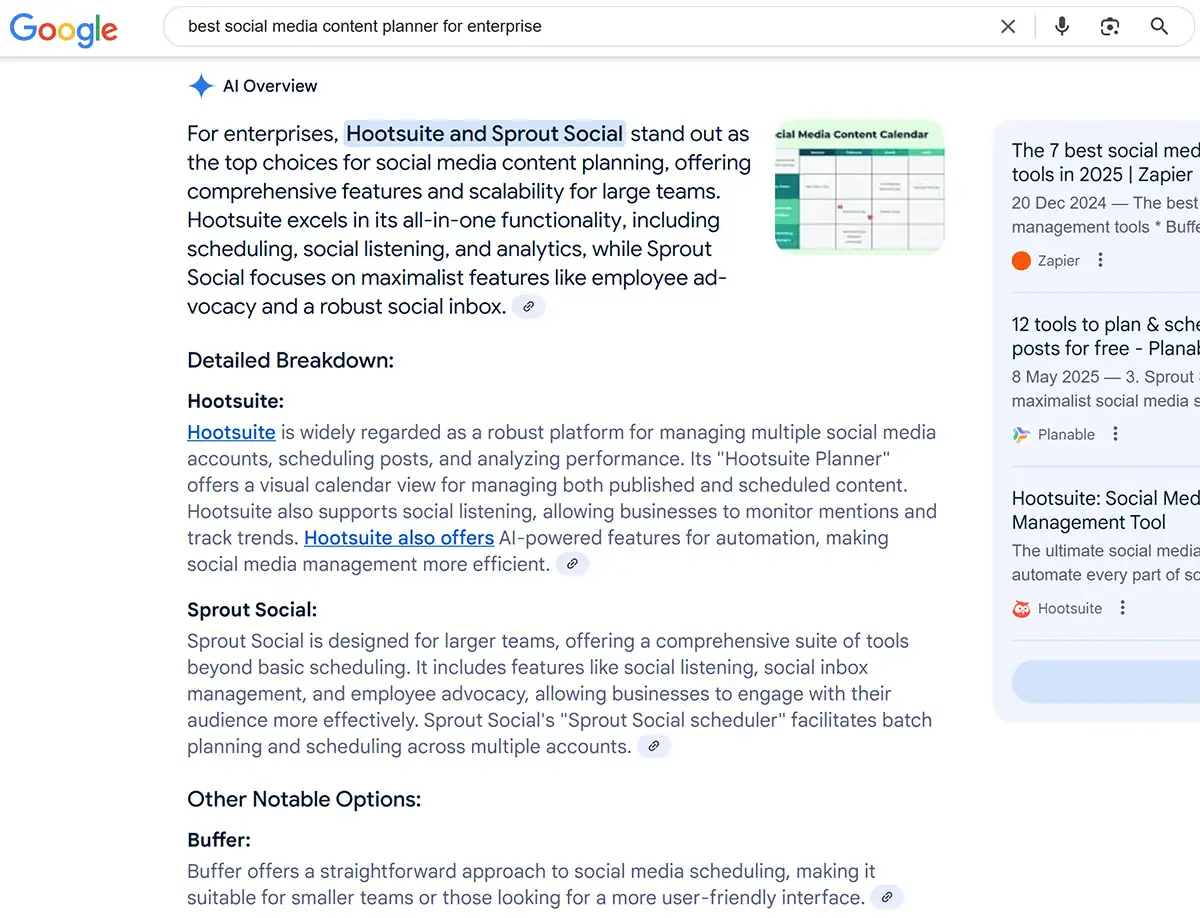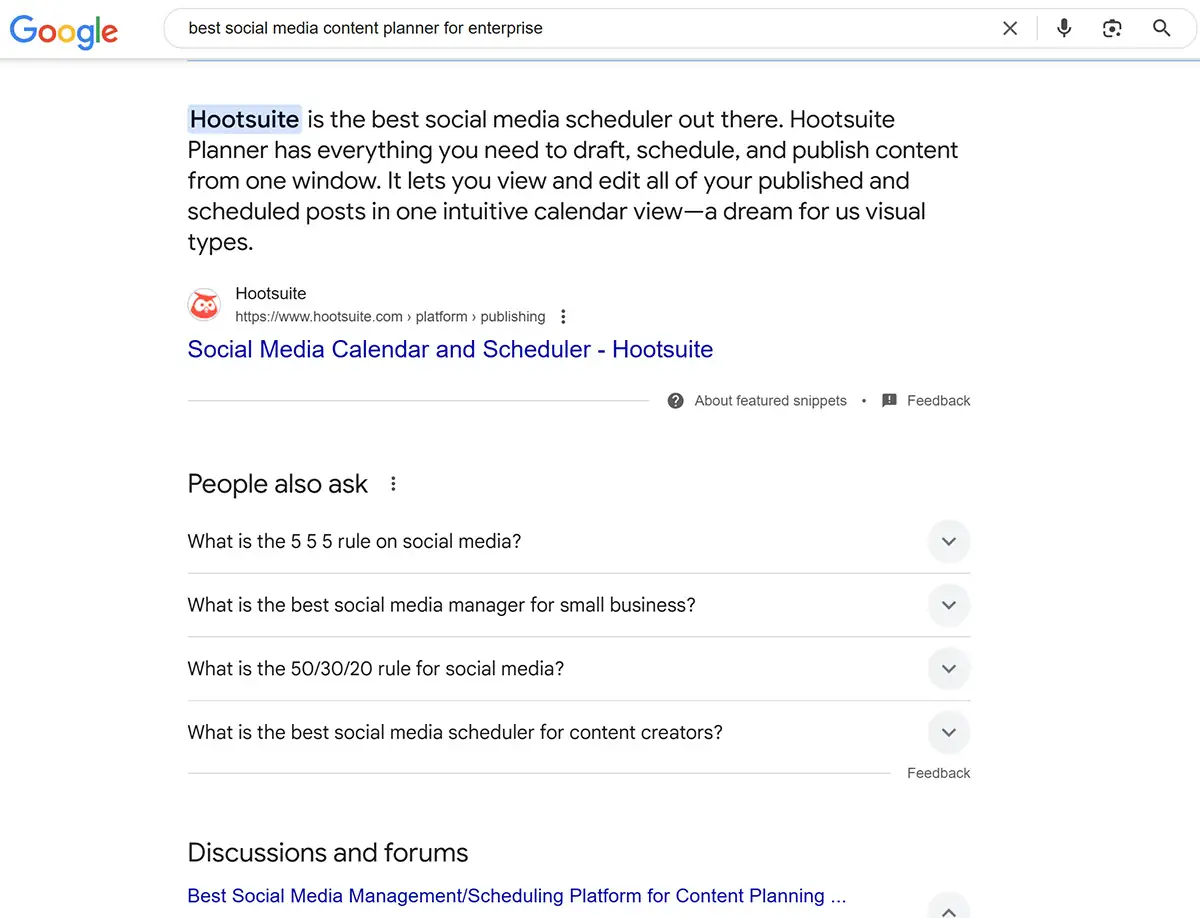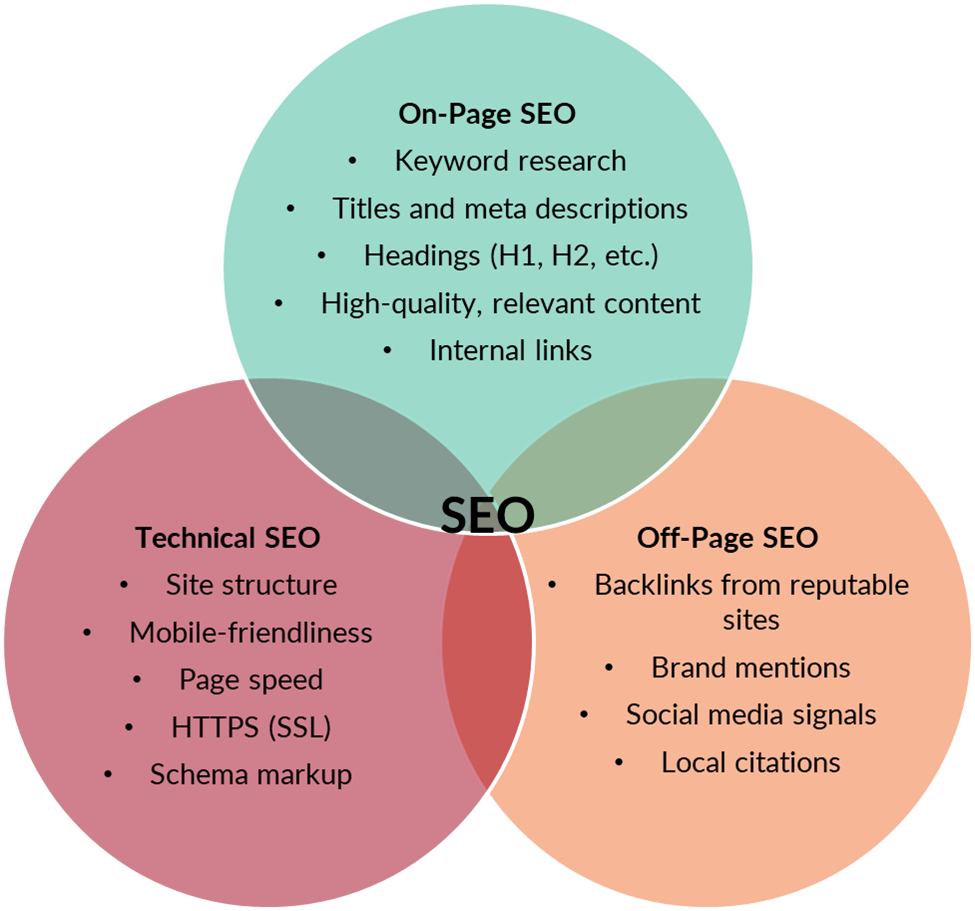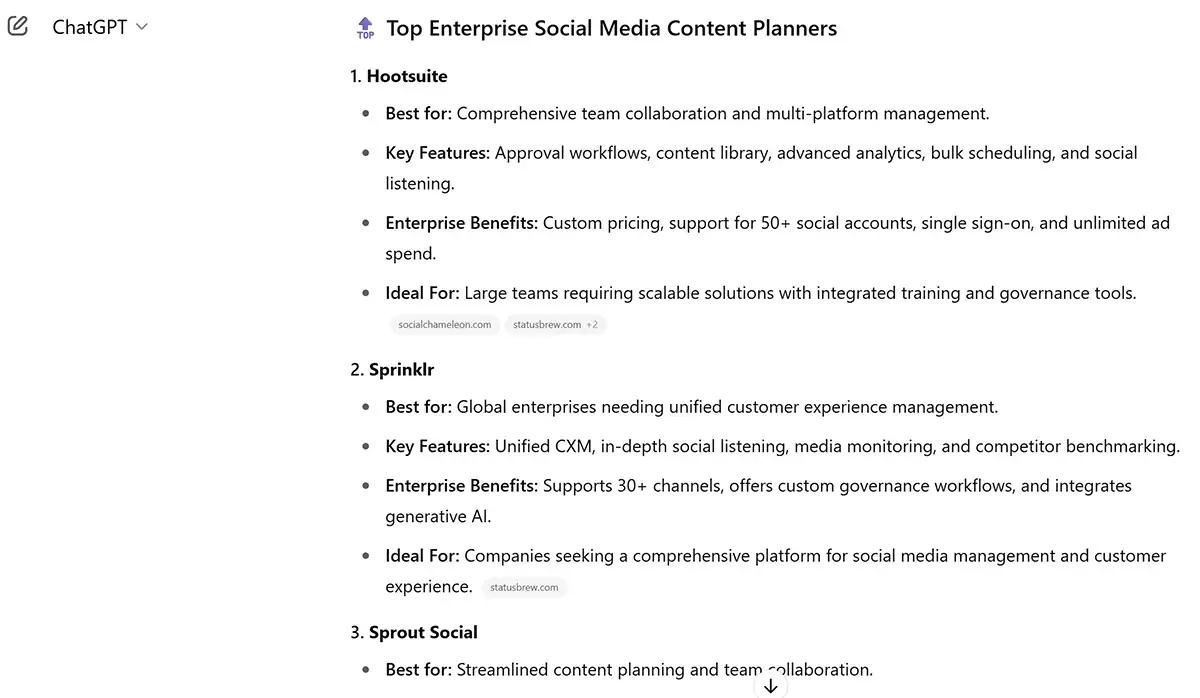In the fast-changing digital marketing landscape, staying ahead means not just adapting, but anticipating.
The ongoing challenge? Making your brand visible, attracting the right audience, and building authority in a crowded and competitive space.
For years, search engine optimisation (SEO) has been the foundation of online visibility. But now, with the rise of generative AI, a new approach is entering the spotlight: Generative Engine Optimisation (GEO).
Knowing the difference and, more importantly, the strategic interplay between SEO and GEO is no longer optional – it is critical for securing a competitive edge in the modern marketing arena.
In a hurry? Jump to the comparison.
The endurance of search engine optimisation (SEO)
SEO is the art and science of improving a website’s visibility on traditional search engines like Google, Bing, and DuckDuckGo, primarily for unpaid (organic) search results. Its objective is to increase the quantity and quality of traffic to your website through organic search engine results.
This established discipline operates on several interconnected pillars, each vital for achieving and sustaining high rankings:
The strategic value of SEO is undeniable. It builds long-term brand authority, drives sustainable organic traffic, and often proves to be more cost-effective over time compared to continuous paid advertising.
SEO faces several ongoing challenges: adapting to increasingly complex algorithms, addressing Google’s growing emphasis on E-E-A-T (Experience, Expertise, Authoritativeness, and Trustworthiness), and keeping pace with evolving user intent and search behaviour.
Introducing generative engine optimisation (GEO)
With the rise of generative AI like ChatGPT, Google Gemini, and Microsoft Copilot, how people find information is changing. That’s where GEO comes in.
GEO is about optimising content for AI models, not just traditional search engines. It’s about ensuring your brand’s information is not only discoverable, but also accurately understood, processed, and utilised by AI to generate responses, summaries, and creative content.
The fundamental differences between SEO and GEO are profound and speak to the evolving nature of information retrieval:
Feature
SEO
GEO
Interface
Human searchers directly interact with traditional search tools (e.g., Google search bar).
Chatbot and conversational AI interfaces (e.g., ChatGPT, Gemini, Copilot), which provide synthesised answers.
Output Format
Ranked lists of web pages, designed to drive clicks to websites.
Synthesised, direct answers, summaries, or new content generated by AI, often without a direct click to the source.
Referral Traffic
Primarily drives direct website traffic through organic clicks.
Often results in “zero-click” answers, where users get information directly from the AI, reducing the need for direct website clicks.
Content Input
Primarily keywords and 2-4 word phrases.
Natural language questions, prompts, and complex queries.
Authority Signals
Relies heavily on backlinks, domain authority, on-page keyword presence and technical soundness.
Integrity, factual accuracy, clear citations, and inclusion in reliable model training data or RAG corpuses.
Number of Results
Typically presents 10 organically ranked results for a single query, some of which may be enhanced listings for forums, multimedia, trending news, or product data.
A single, concise, synthesised answer or a small set of curated options. Typically lists 3-5 suggestions, unless prompted to specifically provide a longer list.
Changeability
Evolves every few months with algorithm updates (e.g., Panda, Penguin, Core updates).
Develops at an accelerated pace with new LLM releases and AI advancements on an almost weekly basis.
Personalisation
Limited personalisation based on search history and location.
Highly personalised based on user’s ongoing conversation, preferences, and contextual understanding.
Metrics / Measurement
Measured by traffic, rankings, conversions, bounce rate, click-through rate etc., via established, traditional analytics tools.
Requires new metrics: brand mentions within AI outputs, factual accuracy in AI summaries, presence in AI training data, query completion rates in conversational AI, and the more traditional referral traffic metric.
Data Sources & Indexing Methods
Web crawling, obeying robots.txt and sitemaps for indexing public web content.
Model training data, RAG (Retrieval Augmented Generation) corpus, or API-integrated retrieval pipelines from various data sources.
Crawling & Updating
Continuously crawls and indexes web pages, relying on sitemaps, links and robots.txt.
Models are updated periodically (training cycles); RAG systems can pull real-time data but rely on the source’s crawlability.
Query Processing
Keyword matching, semantic analysis to find relevant pages.
Deep semantic understanding, intent recognition, contextual reasoning to generate comprehensive answers.
Algorithms
Core Web Vitals, E-E-A-T, spam scoring, link analysis are core. Core Web Vitals matter significantly for user experience and ranking.
Emphasis on factual integrity, coherence, relevance, and ability to provide synthesised answers. E-E-A-T is weighed heavily but through different levers (e.g. consistent factuality, clear sourcing). Spam scoring is different, often based on content quality and consistency.
Effectively, GEO necessitates creating content that is meticulously structured, factually precise, and semantically rich. It involves thinking about how an AI will ingest and summarize your information.
GEO: How to grow your brand visibility on AI search?
- Content Formats: Benchmarking your own brand’s visibility and noting the types of content that gets references on ChatGPT and in AI Overviews is the first step. Testing different types of content on your site can then help you establish what is most likely to work for your business.
- Clarity and Conciseness: AI models benefit from direct, unambiguous language.
- Factual Integrity: Disinformation or contradictory statements will likely be flagged or ignored by sophisticated AI models.
- Structured Data and Schema Markup: Provide explicit semantic meaning to your content, either through clean HTML or schema, making it easier for AI to understand relationships between entities and facts.
- Knowledge Graphs: Contributing to and leveraging knowledge graphs helps AI build a comprehensive understanding of your brand, products, and services.
- Q&A Formats: Directly addressing potential questions your audience might pose to an AI assistant can be highly effective.
- Citations: The opportunity for GEO extends beyond just your own web properties. Mentions of your brand or your content on other reputable sites could still get cited and put your brand in front of customers through AI-generated responses.
Start with a GEO Workshop: learn how AI-driven search impacts your brand visibility, and get actionable takeaways to stay ahead.
How SEO and GEO can work together
Crucially, GEO does not replace SEO; it extends and complements it. To win in both search and AI platforms, brands need to focus on both.
Here’s how to make them work together:
”GEO does not replace SEO, it extends it
Real-world test
“Best social media content planner for enterprise”
To illustrate this in practice, we searched for the best social media content planner for enterprise, and compared results from ChatGPT, Google organic SERPs and Google AI Overviews. While Hootsuite was listed prominently on all three, Sprout Social and Sprinklr were not.
Google Search (SEO & GEO):
While a vendor – Hootsuite – ranked highest organically in the traditional SERPs, it was also featured as the top choice on AI Overviews, but the most prominent source links pointed to informational articles, and the top-ranked vendor site was only visible if the AIO was expanded.


Sprinklr was nowhere to be found on the first page of organic search results or the AI Overview.
ChatGPT (GEO):
ChatGPT’s conversational search results listed Hootsuite as the top choice, followed by Sprinklr. This was markedly different from the Google’s response. Remarkably, none of the citation links shared here pointed to vendor sites. Instead, all the sources listed in ChatGPT’s response linked to informational articles and discussion forums like Reddit.
This highlights that prominent presence on one format does not guarantee any visibility on the other. While strong SEO ensures your specific content ranks for direct queries, GEO is crucial for ensuring your brand’s information is synthesised and presented within the AI’s suggestions and general overviews, even if that does not lead to a direct click.
Start working on GEO now to secure the future
The digital marketing landscape is always changing. While Search Engine Optimisation is still a key part of online success, the rise of Generative Engine Optimisation marks a major shift in how people find and use information.
It is not SEO versus GEO, it is SEO and GEO.
- SEO: Gets your site into ranked search results to drive clicks.
- GEO: Positions your content in AI-powered instant answers for greater influence.
Those who take the time to understand the difference between the two, and learn how to bring them together in a smart way, will not just keep up with the changes, they will be ahead of them. This approach will give your brand a real edge and help ensure it stays visible, trusted and relevant in the AI-powered future.
About the Author
Melanie is a digital marketing consultant at AccuraCast, specialising in crafting innovative strategies to help businesses grow and succeed online.













